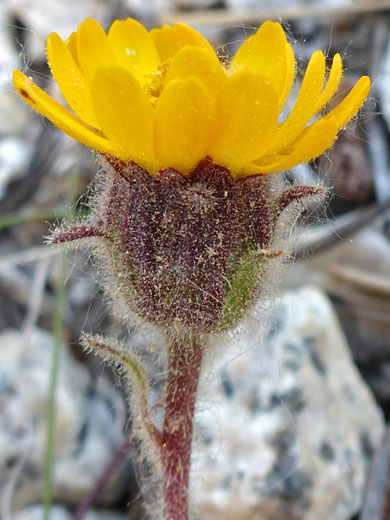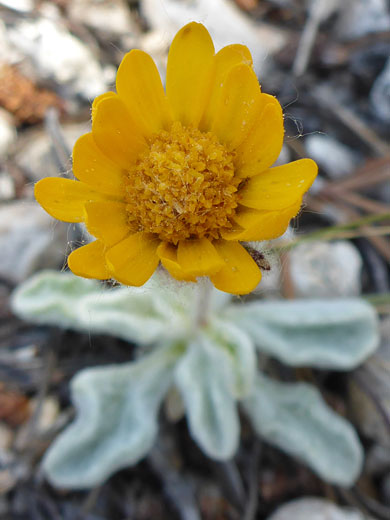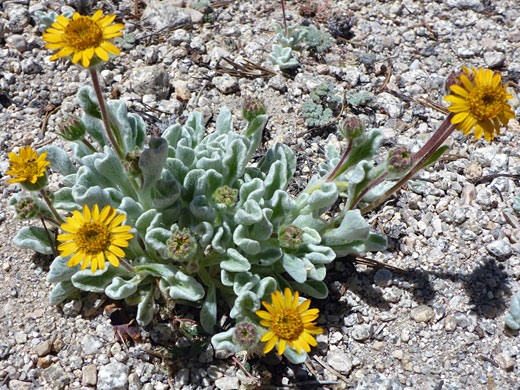Common name:
Pumice alpengold
Family:
Scientific name:
Hulsea vestita
Main flower color:
Range:
South and central California, and a small area of western Nevada
Height:
Up to 3 feet
Habitat:
Conifer forests, rocky slopes, sagebrush, chaparral, from 4,500 to 12,800 feet
Leaves:
Spatulate, greyish-green, woolly hairy, mostly basal, up to 3.5 inches long
Season:
May to September
Hulsea vestita occurs mostly in the Sierra Nevada and other mountain ranges of southern California, with a few isolated locations in Nevada. Leaves are generally hairy but not glandular, and are concentrated at or near the base; the few stem leaves are much smaller. Hairs are woolly, moderate to densely covering the leaves and stems. Leaf margins may be entire, wavy, lobed or toothed.
Stems are topped by one flowerhead or (less often) two or three. Phyllaries are approximately equal in length, around a third of an inch, hairy, and pointed at the tip. They may be purplish, either just at the apex, or all over. Flowerheads contain between nine and 32 ray florets, yellow to orange.
There are six subspecies of hulsea vestita (parryi, pygmaea, vestita, inyoensis, callicarpha, gabrielensis), differing in phyllary hairiness, leaf shape, leaf margin characteristics and ray floret color.
Stems are topped by one flowerhead or (less often) two or three. Phyllaries are approximately equal in length, around a third of an inch, hairy, and pointed at the tip. They may be purplish, either just at the apex, or all over. Flowerheads contain between nine and 32 ray florets, yellow to orange.
There are six subspecies of hulsea vestita (parryi, pygmaea, vestita, inyoensis, callicarpha, gabrielensis), differing in phyllary hairiness, leaf shape, leaf margin characteristics and ray floret color.
All Contents © Copyright The American Southwest | Comments and Questions | Contribute | Site Map







